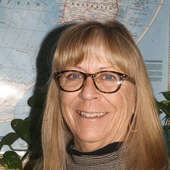- Research tips and McCook Brick Company- solid as a brick (12/16/24)
- Big Give appreciation and some railroad characters (11/15/24)
- George Randel becomes a landowner, gets married, and takes in a Buffalo Bill show (9/20/24)
- The memoirs of George F. Randel, early settler of Red Willow County (9/12/24)
- Vietnam War Memorial honors Nebraskans who served (6/13/24)
- McCook business promotions - just prior to 1893 stock market crash (5/30/24)
- Shall we dance? Meet you at the Gayway (12/8/23)
The case of the mysterious medals
Friday, June 26, 2020

Medals like those pictured above were found on a McCook farm in the 1900s.
Courtesy image
While we have grown up thinking that the United States was created by the landing of the Puritans in 1620, a vast portion of what makes up our country today was actually claimed by Spain after the exploratory voyage of Christopher Columbus (an Italian ship’s captain) who sailed because of the monetary contribution of Queen Isabella of Spain in 1492.
Consequently, the Spanish empire claimed from the Caribbean islands, half of South America, most of Central America and large portions of North America that included Mexico, Florida, the Southwestern and Pacific coast regions of what is now the United States.
Coronado is believed to have led an expedition into the Great Plains during the 1540’s and it has been reasonably offered that in 1601, nearly 20 years prior to the landing of the Puritans on the Mayflower, the Spanish Conquistadors, led by Juan de Onate, traveled into the south-central portions of Kansas searching for gold, converting natives to the Catholic Church, and taking goods of value for the Spanish Crown.
It is rumored that they had a “pow-wow” with native Chiefs from the territories in Kansas and gave gifts of honor to them. The question remains unanswered on the possibility that they traveled into what Nebraska is now.
King Charles III was king of Spain from 1759-1788. Silver medallions were struck with his likeness and carried to the new world. These medallions are examples of what are called, Peace Medals, and were given to native Chiefs by explorers in the new world.
Fast forward to the early 1900’s and Joseph Allen’s farm north of McCook: “A few days ago while Joseph Allen was hoeing corn on his farm about 10 miles north of this city, he uncovered a silver medal about an inch and a half in diameter to which was attached a ring by which it could be suspended. It is an old Spanish medal of merit and thought to be over 350 years old, and undoubtedly lost when the Spanish expedition passed through here.
It is almost pure silver, and well worn round the edges, as is also the ring by which is it was hung, as it is broken at the top which is probably the cause of its being lost. The inscription on the medal is quite plain and it is good condition. On the head: Is the head and bust of a man, presumably Carlo III surround it in capital letters in a circle “Carlo III, Rex De Esp. Emo. De Las Indies.” Reverse side, large wreath with the words in large capital letters, “AL MERITO.”
There is no date upon the medal. It was brought to town the first of the week by Ramey Allen and taken to L.C. Stoll who cleaned it and it is now on exhibition in his store window.” (I cannot tribute this to a certain newspaper in McCook because the article is from a scrap book copied by Ronald Allen today.)
An Omaha paper also picked up the story and a quote by McCook’s ex-senator, John Cordeal, was added: “The cornfield has been under cultivation for at least twenty years, and it is difficult to understand why this was not found before.”
In 1915, noted historian, George Hyde, wrote Joseph a letter concerning the medal: “I have just been reading in the Omaha World Herald an account of the old medal which you found on your farm recently. The newspaper says it is a Roman medal, but it is really a Spanish medal, given to an Indian Chief, probably a Pawnee chief, as the Pawnee hunted all around McCook in early times.”
Continuing: “A Spanish agent named Trudeau was sent up the Missouri River in the fall of 1794 with medals and Spanish flags for the head-chiefs of all the tribes in this region and perhaps the medal you found is one that Trudeau gave to a Pawnee chief.” The final paragraph concludes his letter: “Trudeau gave medals like yours to the chiefs of the Kaws, Otoes, Missouri, Pawnee, Omahas, Ponkas, Rees and Cheyennes, but your medal is the first one that has ever been found.”
Now, that letter might just answer the question, but then again history is only a compilation of stories and stories abound concerning Spanish artifacts being found in Southwest Nebraska including the sword that hung in the Chuck-Adair Club and rumors of items found when the Culbertson fairgrounds were first created.
The Carnegie library design was chosen because the committee wanted to honor the Spanish influence in the area as stated in the McCook Tribune coverage. Charles III was the father of Charles IV, so it is quite possible that Trudeau was given medals to distribute that honored Charles III in 1794 but were there earlier travels into Nebraska by the Spaniards or were the other artifacts brought to Nebraska by our Native Americans after meeting with the Conquistadors?
Many thanks to Ron Allen for his historic contributions. SWNGS is moving to a new location in July! Our library will be located in the Masonic Temple building and we are feeling blessed to have found such a wonderful suite. McCook National Bank has been a generous landlord for many years, and we appreciate the rooms that we have been able to use these past years.

